Jan Phillip Cramer started his career in visual effects at Sony Pictures Imageworks in 2005. He then joined Weta FX in 2007 and Digital Domain in 2010. He has worked on a many films including Avatar, Deadpool, Avengers: Infinity War and Morbius.
Michael Melchiorre is working at Digital Domain for almost 20 years. His filmography includes films such as The Golden Compass, Iron Man 3, Terminator: Dark Fate and Spider-Man: No Way Home.
Elizabeth « Liz » Bernard joined the Digital Domain team in 2011. She works on projects such as Spider-Man: Homecoming, Thor: Ragnarok, Loki and Free Guy.
Eric Kimelton has been working in visual effects since 2009. In addition to Digital Domain, he has worked at Rhythm & Hues and Framestore. His filmography includes projects such as 300: Rise of an Empire, Ant-Man and the Wasp, Aquaman and Shazam!.
How was the collaboration with the directors and the Production VFX Supervisors?
Jan Phillip Cramer, VFX Supervisor // She-Hulk: Attorney at Law was a fantastic experience for us as a VFX vendor. We joined the show early on during pre-production and were able to work closely with the client VFX team from day one. We focused on motion studies to help define She-Hulk’s character and establish shoot methodologies. On a show with such a high-difficulty level as She-Hulk, it is critical to have a collaborative working relationship with the client –which we had from the word go. Kat Coiro, the director, would personally kick off episodes with our entire team to ensure we understood the essence of each sequence and Tatiana’s acting choices. This was particularly helpful for the animation team to ensure they fully understood every nuance of her performance.
What were their expectations and approach about the visual effects?
Jan Phillip Cramer, VFX Supervisor // From the outset, the goal was crafting a Thanos-level character for an episodic. This was a huge undertaking, considering the short timeframes on set and in post, as well as the overall budget restrictions of an episodic show. While the difficulty was set by our target, it also provided a roadmap to achieve it. We used helmet mounted cameras (HMC) from Techno Prop with a marker layout based on Thanos. Since we were working with Weta Digital again, we knew this setup would work very well for both companies. For the bodies, we would rely on a combination of inertial and optical mocap to get the best possible coverage.
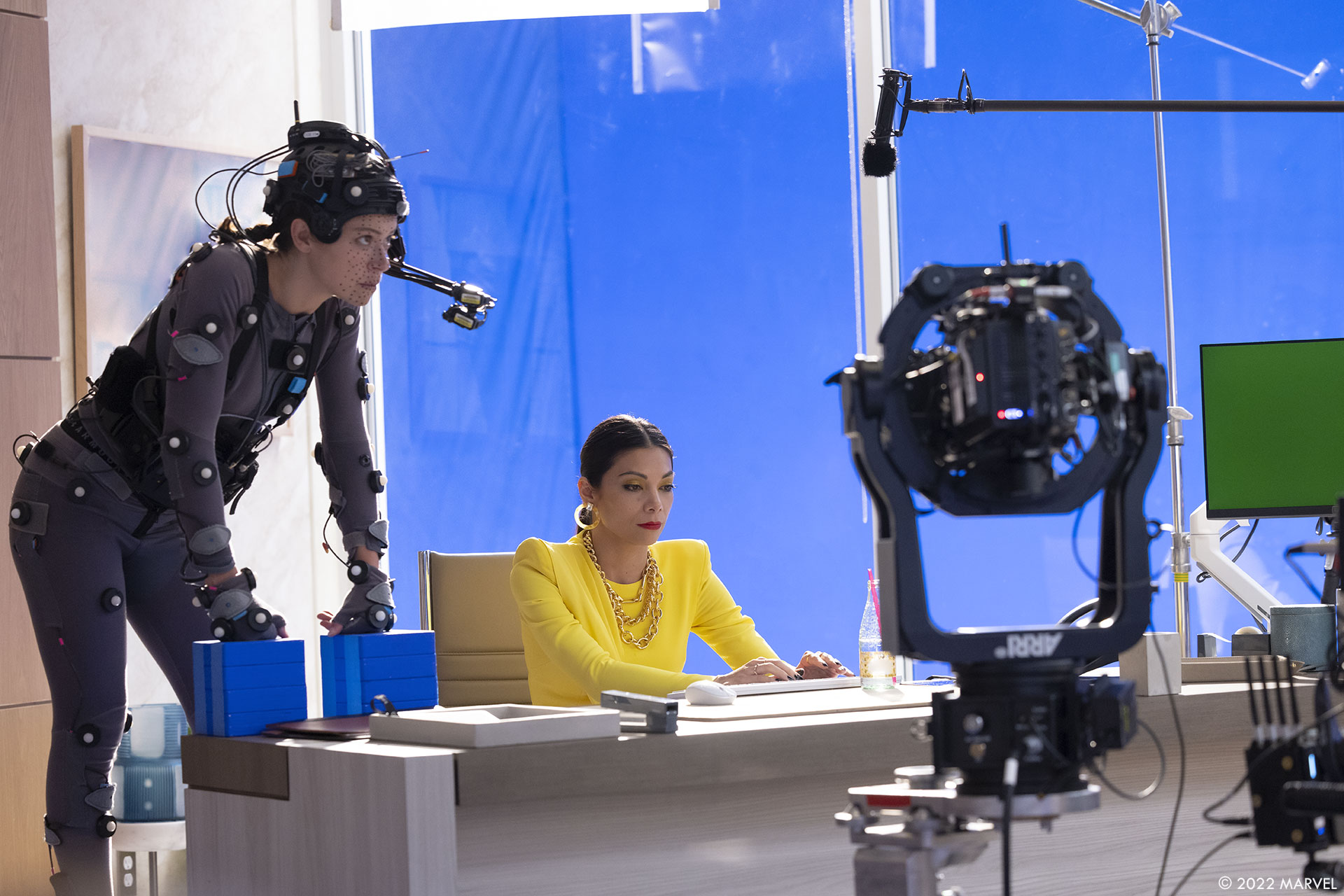
How did you organize the work with your VFX Producer?
Jan Phillip Cramer, VFX Supervisor & Eric Kimelton, VFX Producer // As this is the biggest character show for Digital Domain to date, we knew we would need to plan carefully. We decided to double up on each shot production supervisor role to stay on top of the endless reviews. We ended up having two VFX supervisors, two animation supervisors and two DFX Supes. This turned out to be a life saver. Both Mike and myself split front-end departments, but always reviewed show dailies together to avoid conflicting direction. Since we had teams on the West Coast and East Coast, we carefully mapped out a daily schedule where there were constant reviews to get feedback for the artists.
What are the sequences made by Digital Domain?
Jan Phillip Cramer, VFX Supervisor // Digital Domain worked on every episode of She-Hulk with a focus on acting sequences. All office and courtroom shots are from Digital Domain, as well as several fight sequences, the “Room of Feelings” and the final interaction with K.E.V.I.N. – among many other sequences.
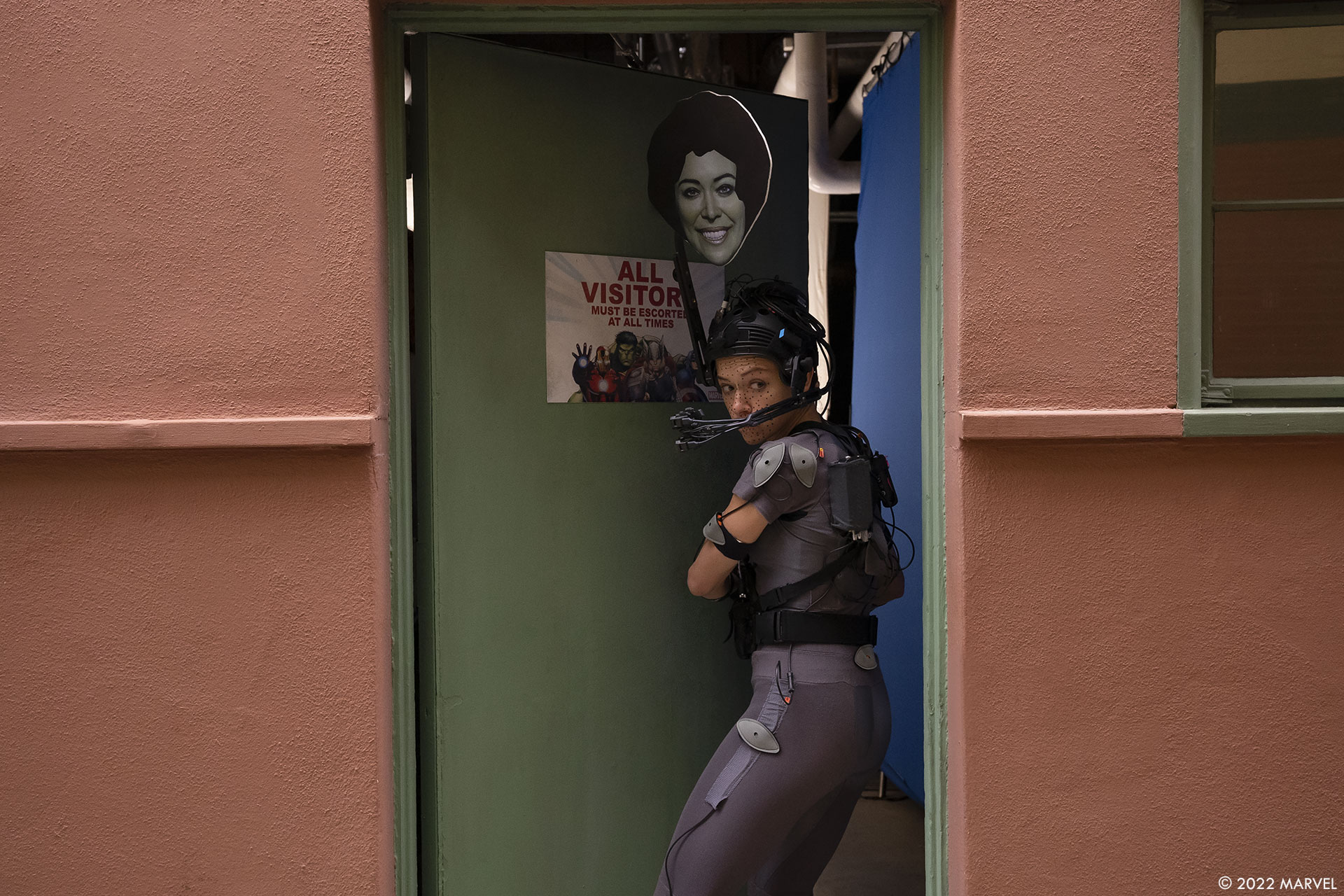
Can you elaborate about the design and creation of She-Hulk?
Jan Phillip Cramer, VFX Supervisor // The design process started the second we joined the show. Our concept artist Chris Nicols worked closely with the Marvel team on many iterations of merging Tatiana into a She-Hulk’s design. Lots of consideration went into the makeup, her age, her hairstyle, and of course, her green skin tone. Similar to Thanos, Ryan Meinerding from Marvel was leading the charge and our team worked very closely with him.
How did you use the previous experience of DD on Hulk and Thanos?
Jan Phillip Cramer, VFX Supervisor // Both characters excellently prepared us for She-Hulk. Thanos made us focus on the highest fidelity of facial animation using our proprietary Masquerade software. This became a major building block for our work on She-Hulk . Hulk focused our team on detailed muscle work, which became essential for the look of She-Hulk as well. On the shading side, both characters helped us a lot. It is never easy to make a green or purple character believable, especially as the logic of their blood flow and color comes to mind. The warm subsurface helps ground her in reality.
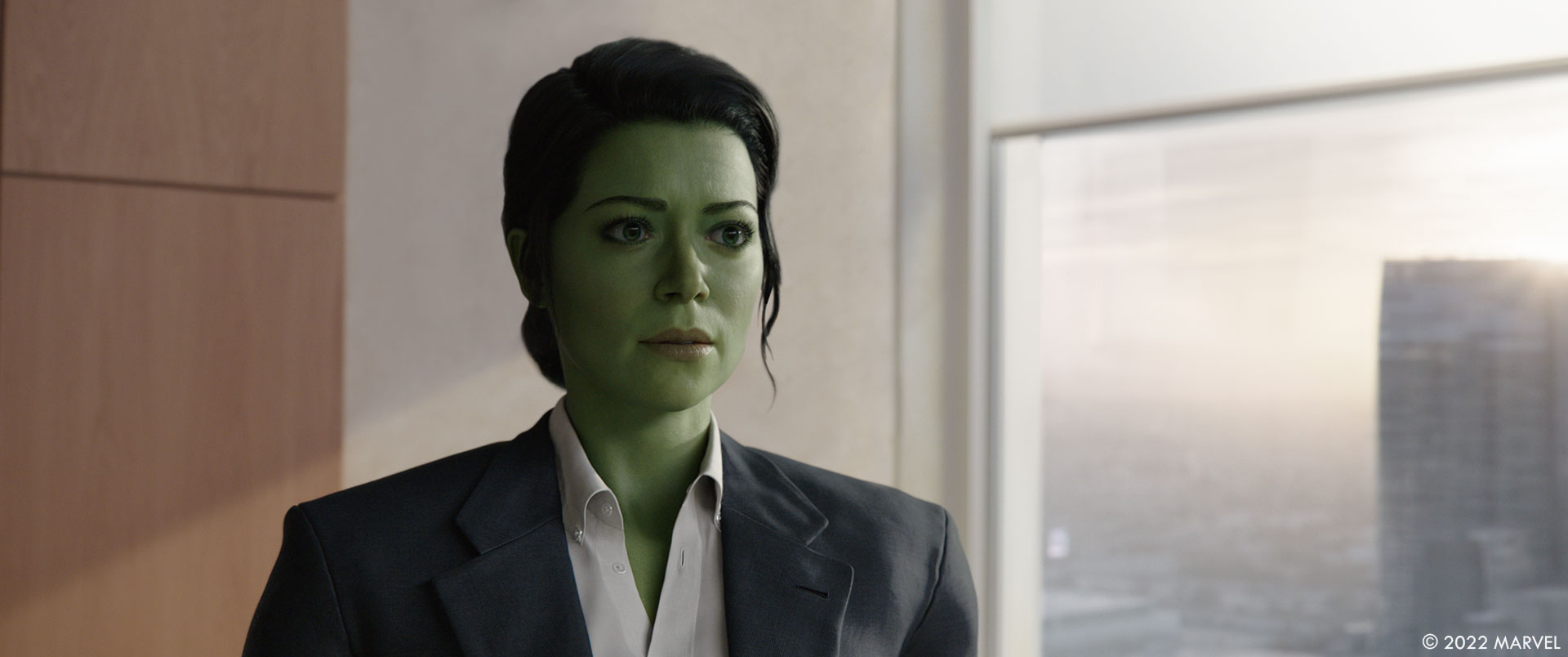
What were the main differences between She-Hulk and Hulk?
Elizabeth “Liz” Bernard, Animation Supervisor // While Hulk is all about muscles and strength, She-Hulk is all about intelligence and beauty. As a lawyer, she needs to talk a lot. Tatiana has an amazing range as an actor, we recreated it in CG. She also has a complicated relationship with her hulk self that is quite different from her cousin’s, and a big part of that comes from trying to exist as a professional and as a woman in the “normal” world. This tension is central to the performance Tatiana gave, and meant that her interactions with other characters often had many layers of subtext to them. Capturing all of that in the final pixels required breaking down the differences between what she was thinking about, what she was saying and what she meant; and making sure it all came through clearly in her face and body language. And, of course, her style is key! She-Hulk wears makeup, has different hairstyles and loves fashion. We built 12 outfits, three hairstyles and five pairs of shoes for her.
How did you handle her hair?
Michael Melchiore, VFX Supervisor // She-Hulk’s hair was an interesting challenge to tackle. We knew going in that–unlike our previous character work on Thanos–we would be dealing with multiple hairstyles. Using Digital Domain’s proprietary groom software “Samson,” our character effects team developed two long hair grooms as well as three grooms with She-Hulk’s hair tucked up in a bun. Ultimately, one long hair and two short hair grooms were used in production. As with every other aspect of this project, her hair was an exercise in detail. Using Houdini Vellum, the CFX team simulated the over 280,000 renderable hairs that comprised She-Hulk’s groom. Many times, after we had a simulation that felt natural and in character, we would then go in and art direct individual hairs. For example, getting the hair to lay on her shoulder just right, or nudging the hair slightly away from her cheek to let a subtle shaft of light catch her eye and allow her eyes to sparkle. The CFX team really approached the challenge as though they were She-Hulk’s hairstylist, taking great care to make sure her hair was as dynamic and beautiful as possible.
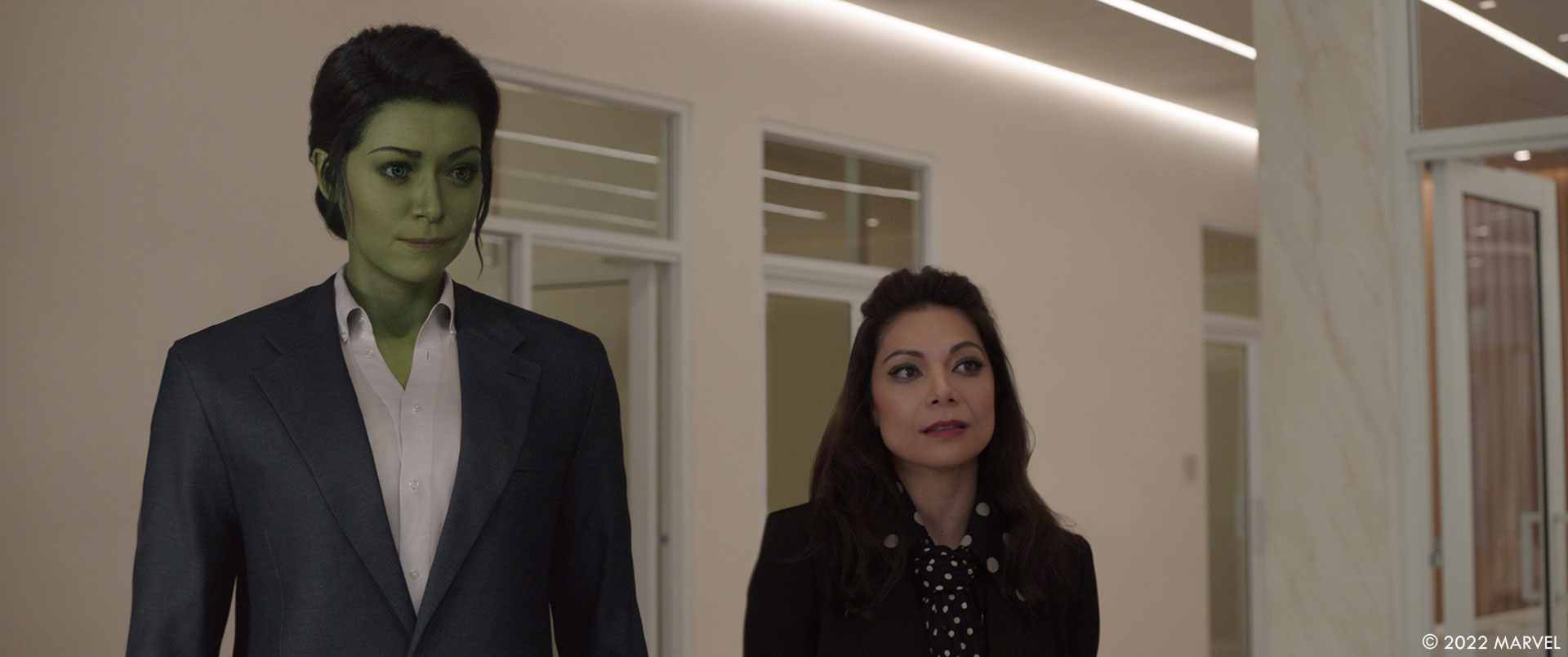
Can you explain in detail about the use of your tool Masquerade?
Elizabeth “Liz” Bernard, Animation Supervisor // Masquerade 2.0 is Digital Domain’s proprietary solution for face tracking and retargeting, and we used it heavily on She-Hulk to create our hero characters’ facial performances. Based on HMC marker data, this software improves on the resolution from the dataset via machine learning and generates its own high-resolution training material. Our talented facial modeling team also sculpted additional correctives to be fed back into Masquerade to help train the system to our puppet and give more accurate results. Masquerade 2.0 was used on nearly every She-Hulk shot and was a vital aspect in the creation of She-Hulk. However, motion capture always needs some fine tuning from animators to ensure that the performance rings true. We like to say that Masquerade gets us most of the way there, and the animators take us home.
How did you handle the Hulks transformations?
Michael Melchiore, VFX Supervisor // We approached She-hulks transformations a bit differently than we have on other shows. Unlike the Skrull transformations Digital Domain created for Captain Marvel, when Jen Walters transforms into She-Hulk it is not a painful process. She is in complete control, and thus her transformation needed to be more elegant and sophisticated. One of the main challenges we faced was how to transition from a fully CG She-Hulk into plate photography of Tatiana Maslany (or vice versa), in long takes without quick cuts or turbulent camera moves to hide behind. To achieve this, we turned to our Charlatan team. Charlatan is our proprietary face generation technology, which uses machine learning, similar to deep fakes. Through numerous sets of training data, we generated Charlatan renders of both She-Hulk and Tatiana. The team was then able to train the CPU to seamlessly transition from one to the other. This was the bridge our compositors needed to smoothly and convincingly transform from She-Hulk to Jen and back. Additionally, as she transforms, her hair either grows longer and more luxurious or retreats into Jen’s signature style. Our CFX team created a transformation hair groom that was able transition from one hair style or length to another.
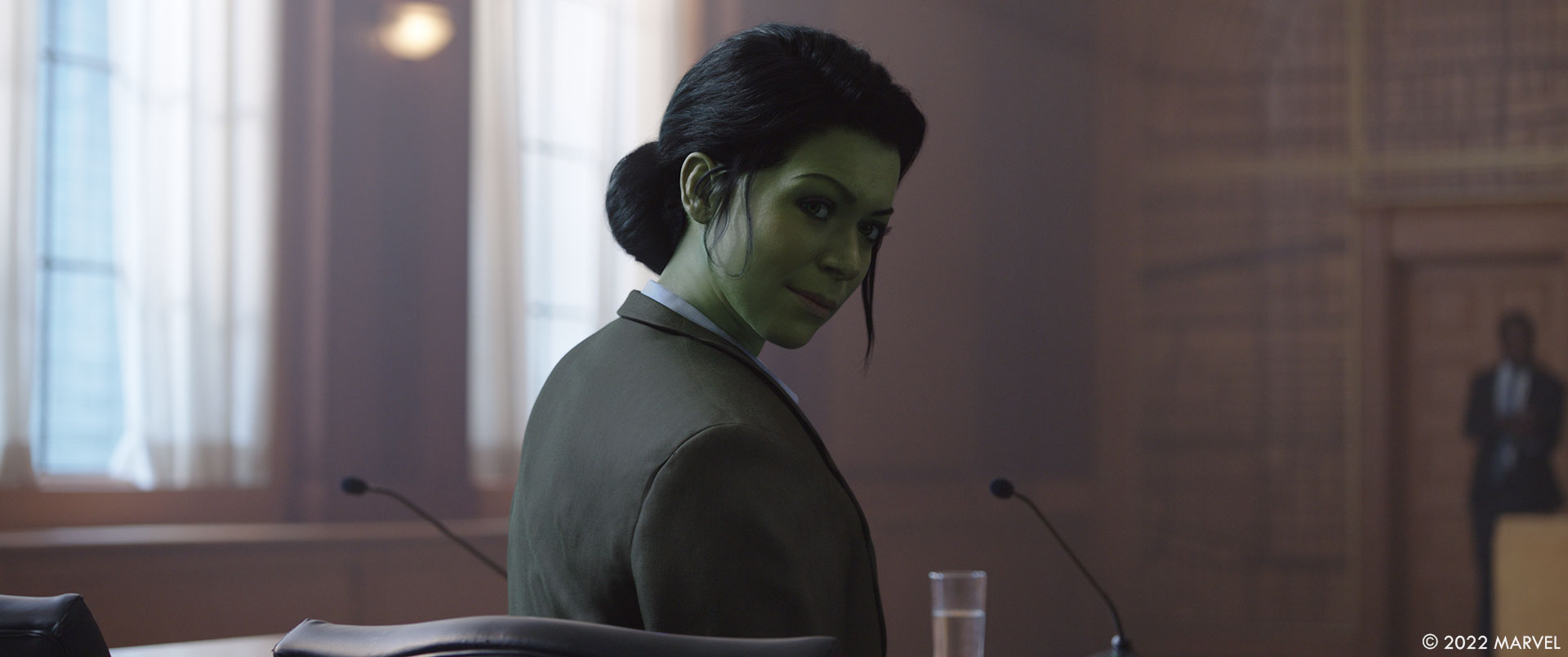
Can you elaborate about your new ShapeWear system?
Elizabeth “Liz” Bernard, Animation Supervisor // Typically with Marvel superheroes we have worked on in the past, we have had just one or two costumes, so we model the character in the costume, and that’s what the character looks like. With She-Hulk and her many different outfits, we did the reverse: we modeled the character and then developed a system that would work for rigging and muscle simulation to adjust her physique and silhouette based on each costume’s needs. DD’s ShapeWear system allowed for different bra behaviors, like a compression sports bra for her SuperSuit, or a conventional bra for her big-and-tall suit. We were able to shape her legs and posterior differently depending on whether she was wearing pants, pajamas or tight skirts.
How did you manage the animation of She-Hulk and give her the sensation of weight and power?
Elizabeth “Liz” Bernard, Animation Supervisor // We started with body motion capture in most cases, and transferred that motion from human-sized Tatiana onto She-Hulk’s six-foot-seven frame. Retargeting to a much longer limbed character meant that all of the movements looked bigger because there was a greater distance from her core to her extremities. We had to do a lot of modification in animation to make sure that Tatiana’s movement felt appropriate to She-Hulk’s size, weight and strength, especially during locomotion shots. We had a number of shots in the law office where she was walking and talking with a human character. This meant that we had to slow her overall walking cadence to avoid having her fully overtake the normal sized person in the plate footage and walk right out of the camera view. Even in shots where she was sitting down, like in the therapy circle monologue, we reworked her overall pose to better suit her proportions. We also toned down or removed arm gestures to avoid her movements feeling too big and strong. Some sequences with more physicality or action required keyframe animation. In addition to the challenges posed by the size difference between our actress and the character, we also had to consider what She-Hulk was wearing. Any woman will tell you that you hold yourself and move very differently if you’re wearing loose pants and loafers versus a tight pencil skirt and stiletto heels!
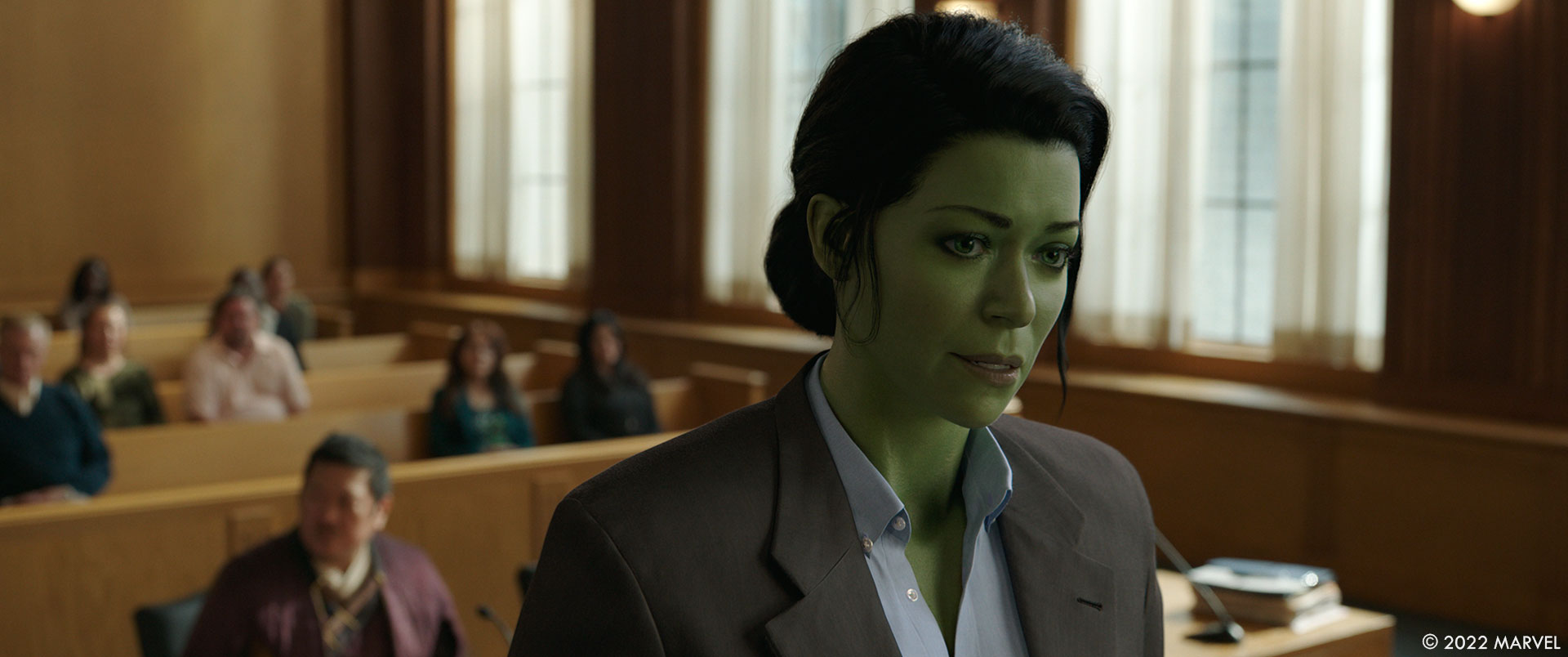
What were the main challenges with She-Hulk?
Jan Phillip Cramer, VFX Supervisor & Elizabeth “Liz” Bernard, Animation Supervisor // There is hardly any bigger challenge in visual effects than making a convincing, fully CG human character like She-Hulk. She is much more human in appearance and temperament than Mark Ruffalo’s Hulk, and she interacts with other humans in very normal environments like offices, court rooms, restaurants, etc. This meant that every detail had to be dialed in extremely carefully in every department from Animation to Character Effects simulations of muscle, cloth, and hair, to Lighting and Compositing –especially since she was often the only CG character in the room. Her look was so dependent on her makeup, that every element needed to be completed to fully judge any given scene. Additionally, when dealing with close to 1,000 shots, you need to establish a very structured shot-production process to ensure quality is consistently high with enough throughput to hit your delivery. Thankfully our production team planned the show to perfection and we were able to deliver on schedule.
Can you elaborate about the design and creation of CG droid K.E.V.I.N.?
Jan Phillip Cramer, VFX Supervisor & Elizabeth “Liz” Bernard, Animation Supervisor // K.E.V.I.N. was such a hoot to work on! The character design that we received from Marvel was pretty well developed by the time we started working on the model, including the trademark black ballcap, so we had a great blueprint to start from. We jumped into animation tests of him very early, in the summer of 2021. To be honest, we were very excited and a little nervous to be working on a robot-version of our uber-boss –no pressure! We decided early on that the three lenses of his face – a wide-angle, a medium and a telephoto zoom- should all behave differently: With those three lenses, we had a lot of options for expression via the zoom, aperture and interior barn door shutters. We had to be careful that those three lenses did not read like a “face,” which was more challenging than it sounds because we humans are pattern seekers and often see faces in inanimate objects, nevermind a talking robot. Because the character design included older 80s and 90s style computer components, like a floppy disk drive and some old school curved two-tone monitors, we figured that the support joints and the body components would be a little loose from wear and tear. We worked that into the movement in the early tests. We also scoured the internet for footage of the real Kevin and found this great clip of him at SDCC that gave us some cool reference of “very Kevin” hand gestures that he uses when he speaks. We made sure to mimic that with K.E.V.I.N.’s robot arms in early tests as well. Everything we sent to Marvel was received enthusiastically, and our original animation ideas were pretty much unchanged in the final product – which was very gratifying. In addition, we were able to pre-viz the entire sequence with our DD previs team and then use a virtual production workflow to shoot the sequence on the mocap stage. It was satisfying to work on a sequence like this from the very beginning to the end.
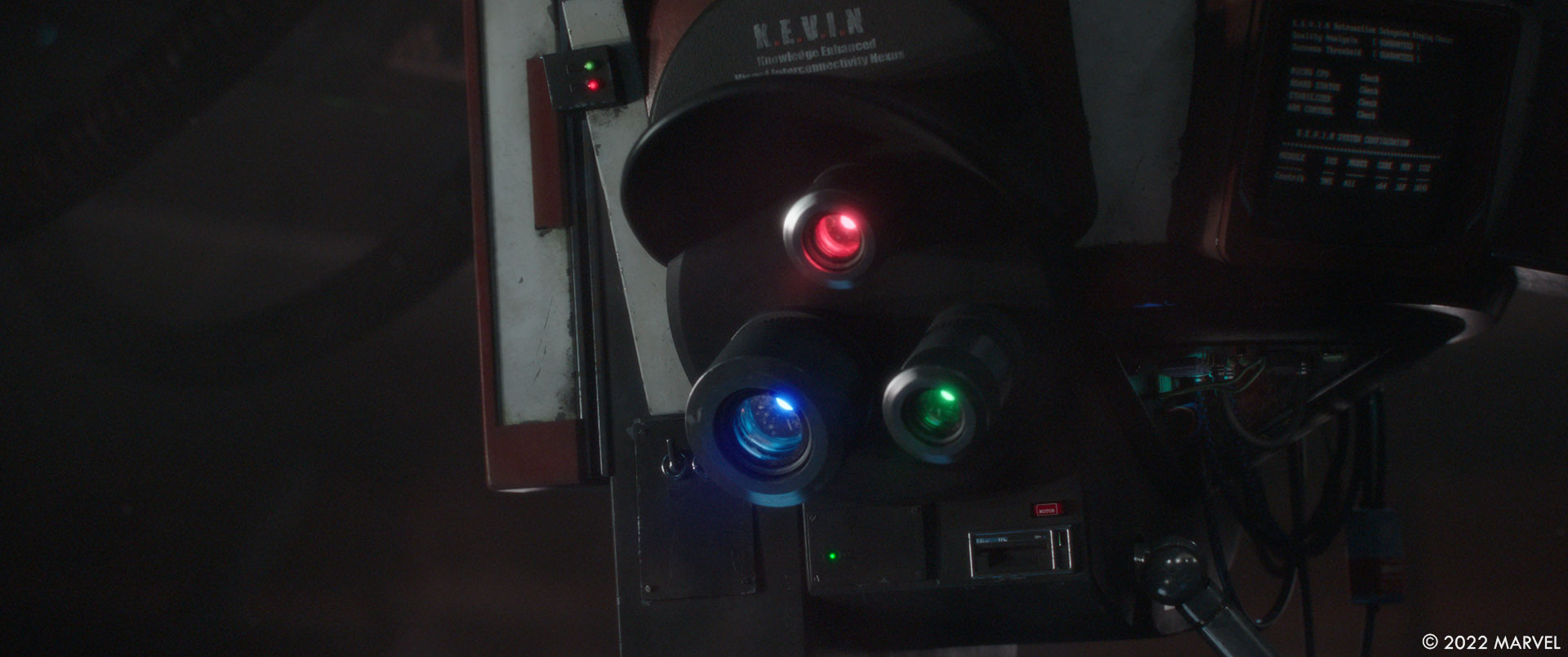
Which shot or sequence was the most challenging?
Jan Phillip Cramer, VFX Supervisor // At the beginning of the show, our first She-Hulk final was a major goal. Due to our big shot count, we had to lock the asset as early as possible and get her approved in a shot. At that point, it is much harder to make big changes to her, so we knew this would be critical. The shot in question ended up being BMT1390, a close up from episode four in the courtroom. We used this shot to dial in her skin tone and complexion, as well as her makeup and age.
Is there something specific that gives you some really short nights?
Jan Phillip Cramer, VFX Supervisor // Yes, contour makeup! I didn’t have any personal experience with makeup to lean on, so understanding contour makeup was something I had to learn. I started watching shows like The Bachelor and Keeping up with the Kardashians to get a better understanding of these looks and how they behave in different lighting conditions. It would in essence change the shape of our actress’s face, sort of like a normal map. In a gray shaded turntable, none of this effect is visible, which presents challenges for our modeling and design teams. In particular, the look of her cheeks and nose would change drastically after using this type of makeup. Our shader helped a great deal with this, but a lot of the details were dialed in by artists in compositing to have finite control. Since so much of her look is defined by the makeup, her character often came together right at the end of any given shot.
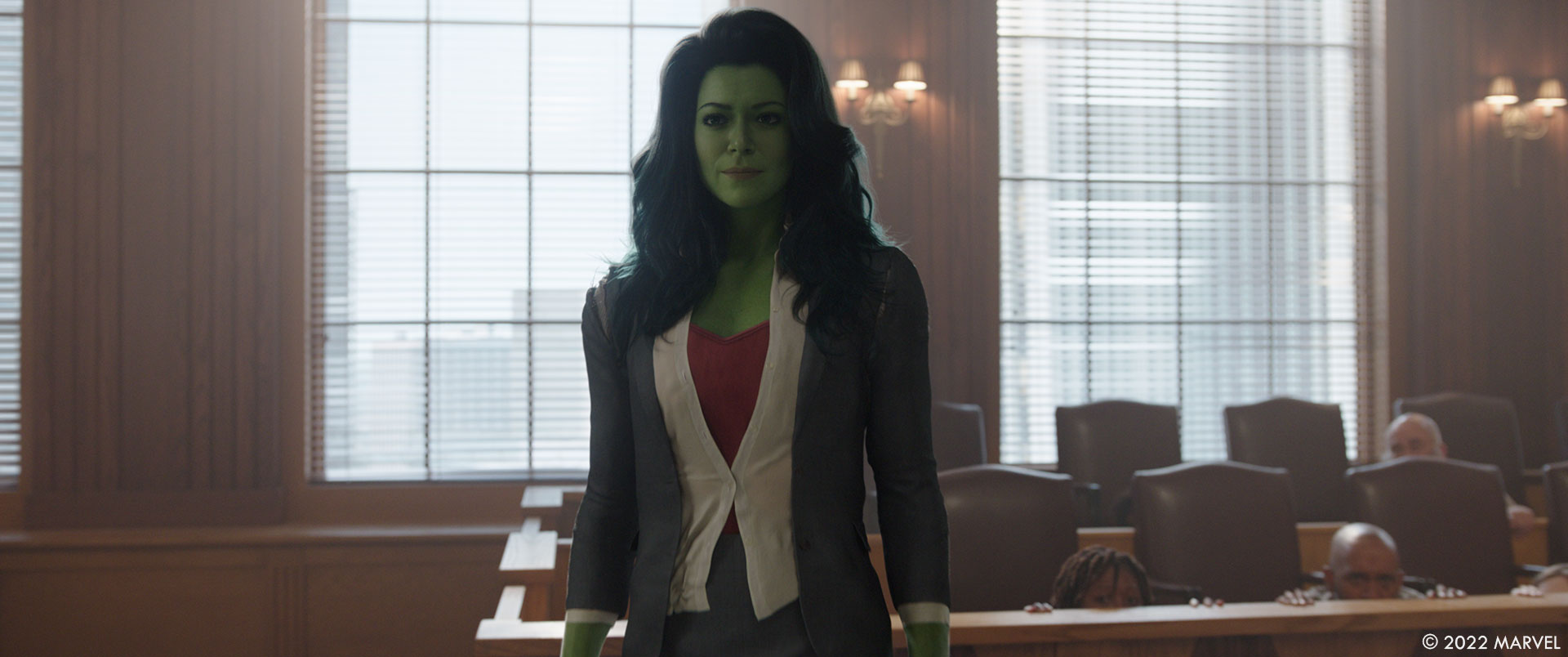
What is your favorite shot or sequence?
Jan Phillip Cramer, VFX Supervisor // She-Hulk had so many cool shots, but FRF3500 stands out like no other. It is over one and a half minutes long and has a tear jerking performance. She-Hulk is performing a deep monologue with very complex dialogue, so each lip shape had to hit perfectly. It is never easy to have long shots like these with a ton of simulation and a calm camera. Each iteration of this key shot took about two weeks to put together. We had to split the shot into six sub-shots, so animation could iterate quicker and the shot would stay manageable. Post animation, it all had to be merged back into the master length to ensure her hair and muscles would be simulated continuously. Dialing in her crying was very delicate work between the compositing and the FX teams, as we only wanted to hint at her emotions, rather than playing them up too strongly.
What is your best memory on this show?
Jan Phillip Cramer, VFX Supervisor // There are so many great memories to choose from, so I will share two. First, seeing Tatiana as She-Hulk during our first mocap test shoot in 2020 was mind blowing. It was so fun to see how she tackled this new character and gave her such an amazing personality. The second is more the sentiment to my team than a moment. Seeing our team work so hard, and work towards delivering everything makes me so proud and happy to have been part of this amazing show.
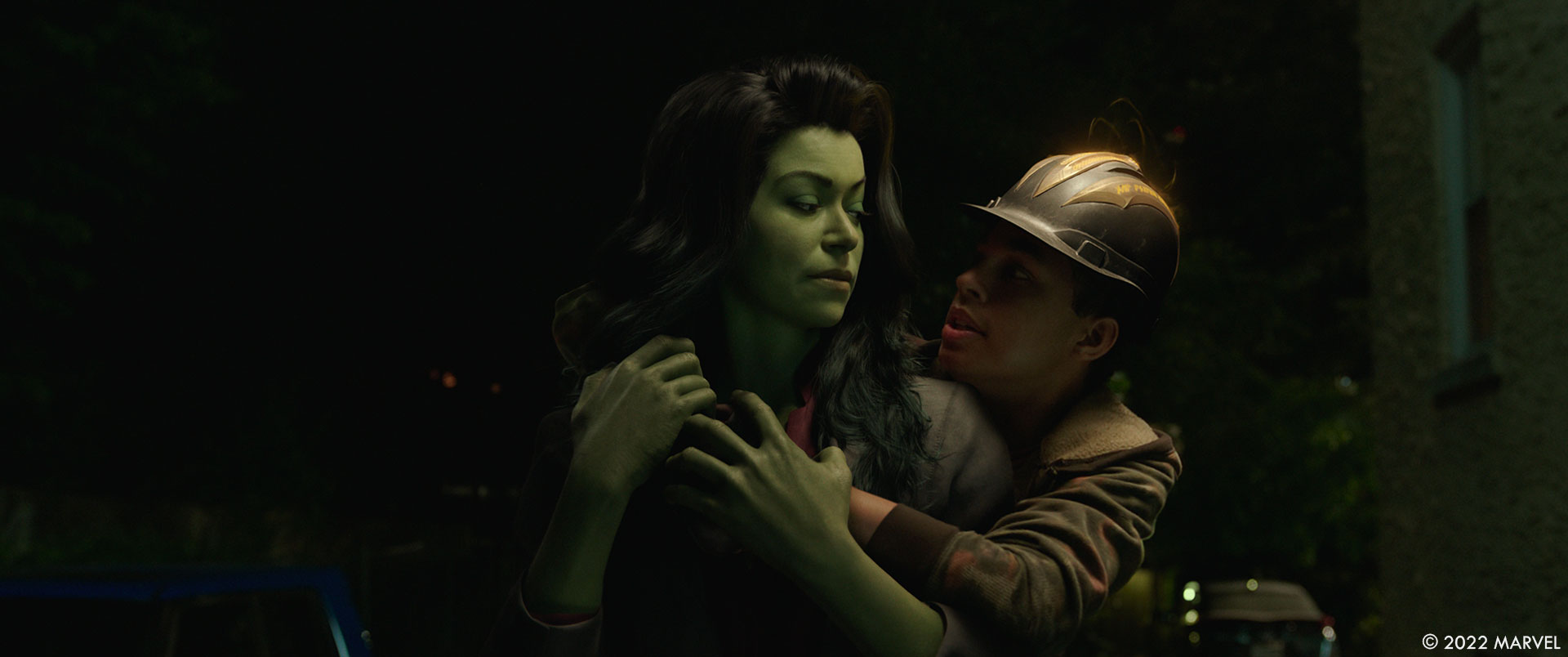
How long have you worked on this show?
Jan Phillip Cramer, VFX Supervisor // I joined the show together with my producer Eric Kimelton in September 2020 in the midst of COVID, and we delivered the show exactly two years later in 2022.
What’s the VFX shots count?
Jan Phillip Cramer, VFX Supervisor // Digital Domain had a total of 967 VFX shots on She-Hulk, not including close to 700 OMITS. This shot count equaled about 63 minutes of VFX work. Within this, we did over 43 minutes of She-Hulk performance and worked on all nine episodes.
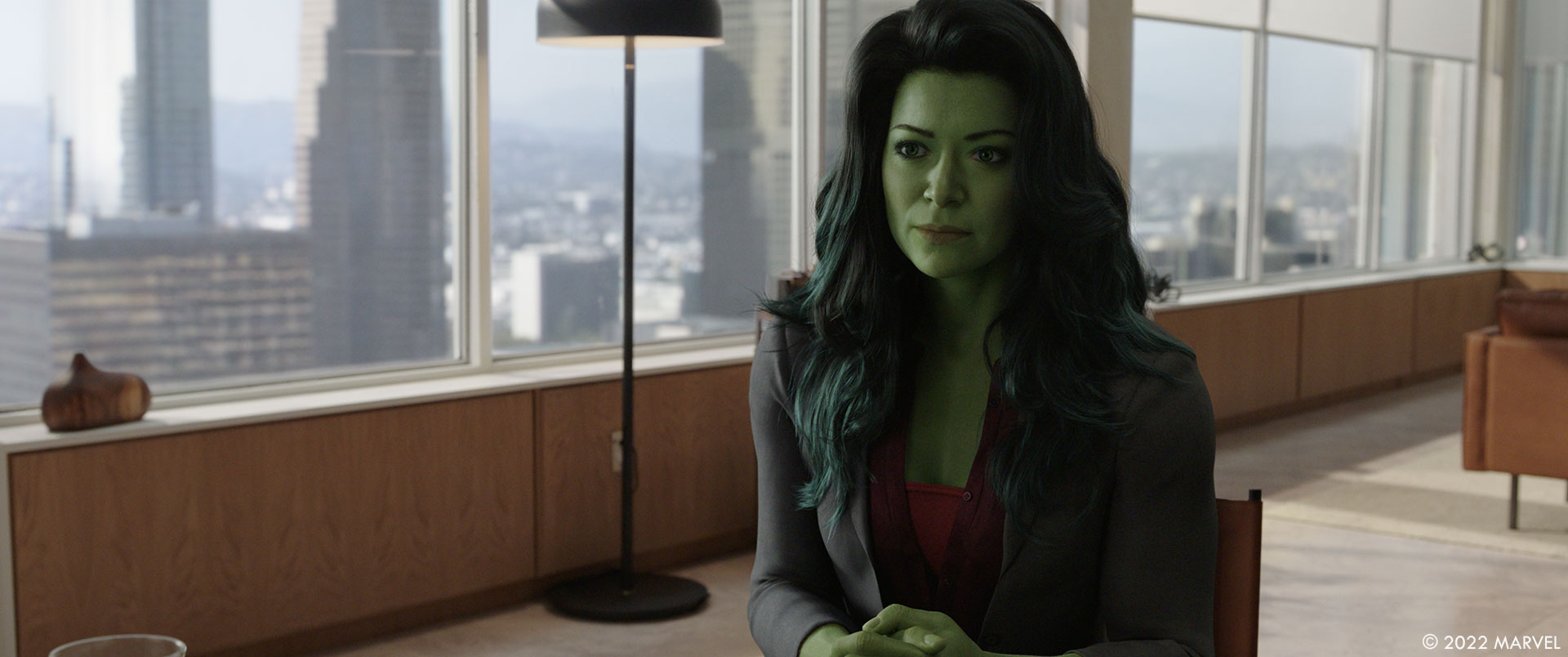
What was the size of your team?
Jan Phillip Cramer, VFX Supervisor // She-Hulk ended up being Digital Domain’s biggest team yet. We worked on the show at our locations in the US, Canada, China and India. We had a total of 710 artists working on She-Hulk over the past two years.
What is your next project?
Jan Phillip Cramer, VFX Supervisor // Still TBA, but it will most likely include high-end facial work with lots of animation.
A big thanks for your time.
// She-Hulk: Attorney at Law – Digital Domain – VFX Breakdown
WANT TO KNOW MORE?
Digital Domain: Dedicated page about She-Hulk on Digital Domain website.
Shannon Justison: Here is my interview of Shannon Justison, Production VFX Supervisor.
Disney+: You can watch She-Hulk on Disney+ now.
© Vincent Frei – The Art of VFX – 2022





